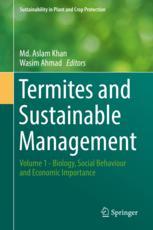

Most ebook files are in PDF format, so you can easily read them using various software such as Foxit Reader or directly on the Google Chrome browser.
Some ebook files are released by publishers in other formats such as .awz, .mobi, .epub, .fb2, etc. You may need to install specific software to read these formats on mobile/PC, such as Calibre.
Please read the tutorial at this link: https://ebookbell.com/faq
We offer FREE conversion to the popular formats you request; however, this may take some time. Therefore, right after payment, please email us, and we will try to provide the service as quickly as possible.
For some exceptional file formats or broken links (if any), please refrain from opening any disputes. Instead, email us first, and we will try to assist within a maximum of 6 hours.
EbookBell Team

4.8
34 reviewsThis Volume comprises 12 chapters in an attempt to bring available information on biology, social behavour and economic importance of termites. Chapters in this book dealing with termites identification provide a review on most updated information of their systematics. Ecologically, termites interact with living and non-living surroundings and deliver a wide range of behaviors. In a separate chapter termites ecology is examined and explored. Termites depend on their gut microbes for digestion of complex polysaccharides of wood into simpler molecules. Information provided on termite gut microbiome and lignocellulose degradation constitutes an important contribution. Termite biology and social behaviour have been addressed comprehensively. Trail pheromones are responsible for the orientation and recruitment of nestmates to the food sources. Once arriving at a potential food source, termites assess its quality using a different set of cues. A separate chapter on trail pheromones, cues used during foraging and food assessment, with preferences for foraging sites, contributes a wealth of information. Emphasis has been given on reviewing ecological benefits of termites in other chapters. The information with respect to termite species as an edible insect and the overall role it plays in food and nutrition security in Africa is quite informative. A separate chapter dealing with importance of termites and termitaria in mineral exploration constitutes a significant step in addressing the economic importance of this insect group.